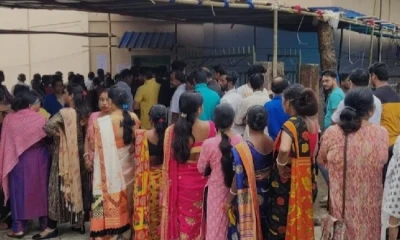As the first phase of Lok Sabha elections ended on April 19, Assam witnessed a strong turnout, indicative of the electorate’s active participation in the democratic process, extending until 7 pm yesterday evening.
Across all Lok Sabha constituencies in Assam, voter turnout exceeded 70 per cent, reflecting a palpable enthusiasm among citizens to exercise their franchise. Notably, the constituency of Kaliabor, nestled within the Kaziranga region, emerged with the highest voter turnout at an impressive 83.71 per cent.
Delving deeper into the electoral dynamics, a closer examination reveals intriguing variations across Legislative Assembly Constituencies (LACs). While Kaliabor boasted remarkable participation at 83.71 per cent, Sarupathar lagged behind at 70.38 per cent, indicative of localised factors influencing voter engagement.
Similarly, in the Sonitpur Parliamentary Constituency, the overall turnout stood at a commendable 74.81 per cent. Yet, disparities surfaced across LACs, with Biswanath witnessing robust participation at 77.54 per cent, juxtaposed with Bihpuria’s turnout of 72.00 per cent.
Turning to the Lakhimpur Parliamentary Constituency, the overall turnout of 72.65 per cent depicted a varied landscape of civic engagement. Dhakuakhana emerged as a beacon with a turnout of 76.63 per cent, while Sadiya trailed at 65.32 per cent, signalling areas warranting focused efforts to enhance inclusivity in the electoral process.
In the Dibrugarh Parliamentary Constituency, the turnout of 76.74 per cent underscored a fervent commitment to democracy. Yet, disparities among LACs such as Digboi and Makum, compared to the standout turnout of 79.26 per cent in Chabua-Lahoal, hint at localised factors influencing voter behaviour.
Lastly, the Jorhat Parliamentary Constituency showcased an impressive overall turnout of 79.48 per cent, reflecting a commendable dedication to democratic ideals. Nevertheless, disparities persisted across LACs, with Mahmora registering an impressive 81.81 per cent compared to Jorhat’s turnout of 75.40 per cent.
These turnout figures transcend numerical data, offering insights into the intricate tapestry of democratic engagement. They mirror the diverse socio-political dynamics at play, underscoring the importance of localized interventions to foster inclusive participation in the electoral process.

















